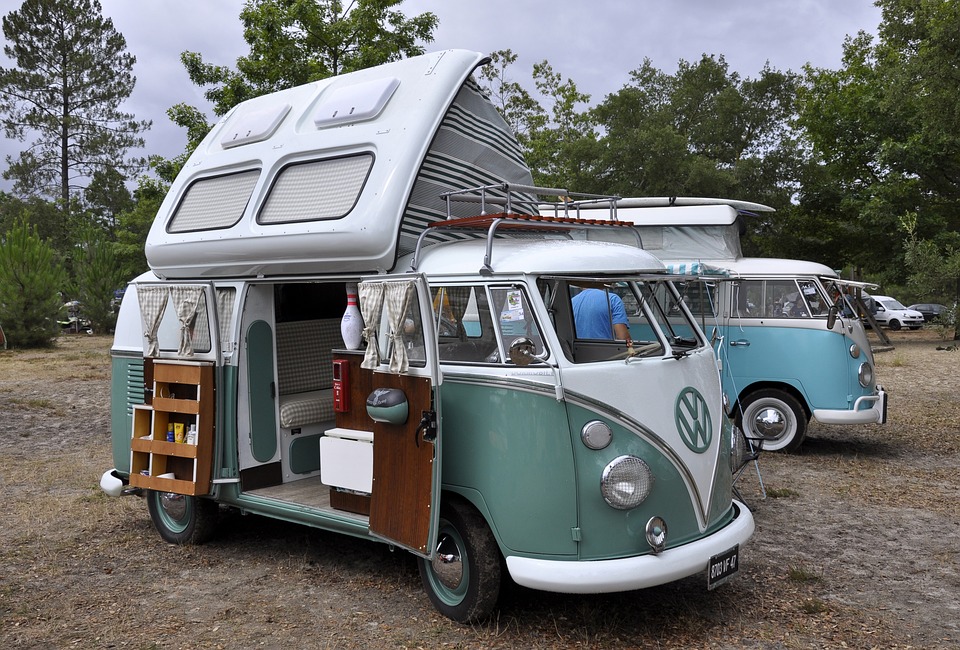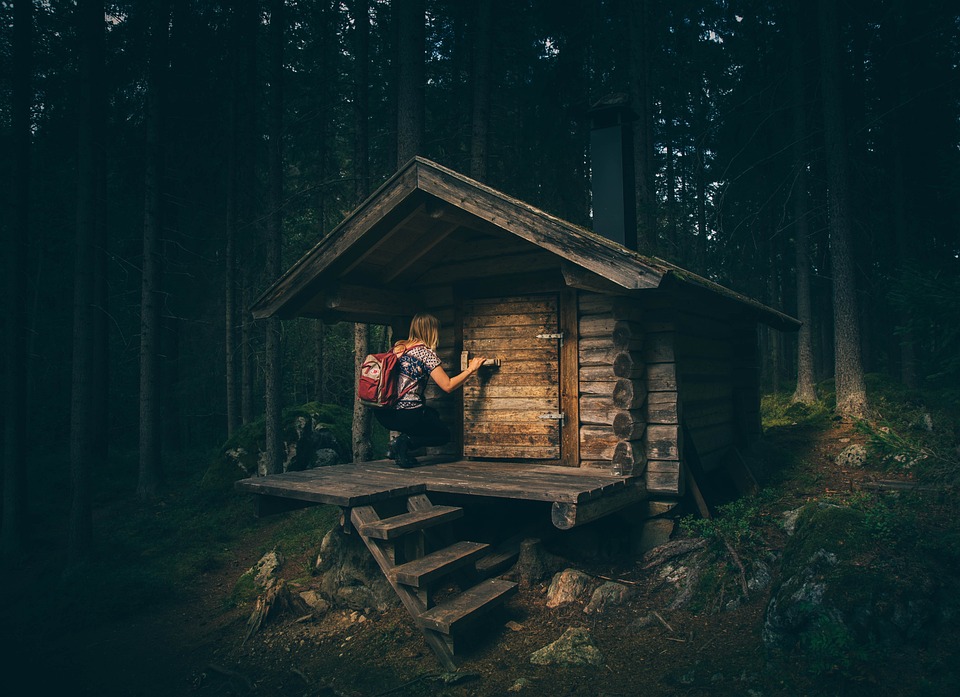Editor’s Commentary: I know the article below only qualifies as a true “late prepper” article for a handful if our audience, but it’s an interesting read nonetheless if only to spark ideas that we can use in our lives. As much as I wish we could all just pick up from where we are, find a secluded homestead with all of the necessary survival gear already set up, and wait out the apocalypse quietly tucked away, that’s just not reality for most.
I will be posting more articles with more useful tips and tricks. To be fair, I’ve been so busy during election season that I haven’t had much time to work on my own preps, let alone offer tips. But the election is done so it’s time for me to get into it all again, especially considering the election means we’re closer now to whatever might make us use our preps.
For those who are actually considering moving to a safer area, it may behoove you to consider one of our newest sponsors and their amazing bunkers. I covered the article below in a short segment on the latest episode of The JD Rucker Show. Below is the article by J.G. Martinez at The Organic Prepper.
Most of us are not exactly farmers and will have a hard time growing or raising what we intend to eat if we just one day decide to start living off our harvests. It is a fact. Hunters and fishers obviously will have an edge after the collapse, but sadly, I am almost sure that in a tribal environment, my social position would not be too high.
That said, maybe joining a tribe after some age won’t be as romantic as it seems. Maybe a better idea, in order to live longer, is to stay low profile and semi-hidden, with only a few close friends and family nearby. At some age, you need some peace.
For many old-school survivalists of times already gone, the proper approach was a complete farm. The amount of work involved with this path is plenty.
The more land you have to take care of, the more problems!
I’ve seen this a few times. Hard-working people who made a few bucks with three or four crops in a row expanded their business by buying another farm somewhere else, and…bang!
With twice the land, their problems multiplied exponentially, and the need for further investment followed.
However, maybe for many of us, the ideal location is not a full-size homestead or a large compound.
A micro-retreat may be the solution.

The word “micro” suggests that something minimal should come to mind. My technical background immediately clicks when I think about anything related to a production facility, and I imagine a highly productive but compact environment.
I have always been fascinated by those overlanders’ custom-built rigs over a Mercedes Unimog chassis. They are compact and space-efficient but comfortable enough for prolonged stays. This is a remarkable example of a well-done micro-habitat.

Also, think about the tiny house movement. Some of those properties are designed for boondocking – living away from civilization and services. (Want to know how to keep your family fed when you have to use a micro-retreat? Check out our free QUICKSTART Guide to building a 3-layer food storage system.)
A micro-retreat doesn’t have to be a micro-producer.
Depending on your family group, or whatever the flavor of “clan” you may have, you could craft a small place quite productive with proper planning, provided you know your climate and your skill level. You could even disguise it as a “vacation” property. The beauty of this is that nobody has to know that your gun safe is in a hidden portion of the basement in your “hunting cabin.” Or, nobody has to know that those PVC DIY empty shelves in your basement will be to grow microgreens to complement your food supply.
Such planning will make your life easier. There will be less investment to make, you will work smarter and not harder (something that will make your senior years more pleasant!), and generally, it will be much easier to keep your place clean and well-maintained.
A “micro-retreat” doesn’t mean you have to restrict yourself to the bare minimum land for your needs.
A plague could attack your crops. Someone could arrive unexpectedly, and you will need some extra. The ideal setup would be a place secluded enough, but where unexpected visitors will be able to stay, if needed.
As an example, you could think of a small greenhouse. You must think in terms of vertical expansion (upwards and downwards)if you want to keep the initial cost of a micro-retreat low enough and to maximize the space. I like to think the positive part of a small setup is that it will be much easier to keep hidden. Planting thorny bushes around will make it inextricable in a few years and will hide your orchard, gardens, and buildings. You may combine this with earthbag DIY construction that you can cover with dirt and some weed or grass grows over an ingenious layout, and it will be almost undetectable.
You may want it as a semi-permanent, permanent, or temporary residence.
The size will depend on what you want, what you need, and what you can afford. That’s the compromise.
Planning includes thinking thoroughly and drawing a sketch with the layout you believe you’re going to need. By dividing your needs into sections, or compartments, you will make sure it will be easier to make a much more complete analysis of what you need.
- Preserve your retirement with physical precious metals. Receive your free gold guide from Genesis Precious Metals to learn how.
You need to know what is next to you!
Neighbors? A cliff?
A mountainside that could generate a mudslide? A lake? A river that could flood your place under several days of heavy rains? Hunting/fishing areas? And, by extension, you need to know what you don’t want nearby!
Try to keep things at a proper size using scaling.
What I like about the concept of a micro-retreat is that you don’t need too much space if you are on your own or have a small family. However, having space outdoors will be a big deal, even if your bedroom is a bunk bed on top of a study or desktop. And, if you build an area to hang out, even better.
You may want to use some advice from those who are professionals at living in small spaces.
Use vertical space.
You may even think on three levels, provided you’re in a place with plenty of sunlight:
- Level 1: A terrace with a pergola on top. Place solar panels here for Level 3. Have planters all around with spices or flowers. This level could double as a place to drink coffee, have dinner, or hang out. Or work as a watchtower. Make it easy to access with round stairs. Build it pretty, and make sure the water collected by this roof is collected.
- Level 2: Maybe some tanks for tilapia or more plants that don’t need too much sun? Perhaps you may want to start the microgreens growing at this level?. A secondary walk-in pantry? Materials storage, like plumbing, wiring, and car spare parts? Your woodworking shop? Butcher room? Smoker/dry food storage?
- Level 3: This is a basement.
(Want uninterrupted access to The Organic Prepper? Check out our paid-subscription newsletter.)
Here are a few final thoughts of mine on micro-retreats…
LED grow lights, a small pump for the water/nutrition solution mixture, and shelves with the greens will improve your capabilities to produce highly nutritive vegetables in a reduced space. You don’t need to dig too much. Just do good research on this topic.
Even better, if you can afford more than one, isn’t it always a good idea to have some redundancy in your survival assets? Why not build yet another micro-retreat in a place further away, just in case, then?

You don’t have to “think big.” Especially if the economy forced you to do with what you have.
Wise use of small spaces can be a challenge but very rewarding in the end as well. Let us know what you think in the comment section below and keep tuned for more!
Have you considered a micro-retreat?
What do you think about going small-scale for survival? Have you thought about downsizing instead of creating bigger and more elaborate plans? What do you see as the pros and cons?
Let’s discuss the concept of micro-retreats.
About Jose
Jose is an upper middle class professional. He is a former worker of the oil state company with a Bachelor’s degree from one of the best national Universities. He has an old but in good shape SUV, a good 150 square meters house in a nice neighborhood, in a small but (formerly) prosperous city with two middle size malls. Jose is a prepper and shares his eyewitness accounts and survival stories from the collapse of his beloved Venezuela. Jose and his younger kid are currently back in Venezuela, after the intention of setting up a new life in another country didn’t go well. The SARSCOV2 re-shaped the labor market and South American economy so he decided to give it a try to homestead in the mountains, and make a living as best as possible. But this time in his own land, and surrounded by family, friends and acquaintances, with all the gear and equipment collected, as the initial plan was.
Follow Jose on YouTube and gain access to his exclusive content on Patreon. Donations: paypal.me/JoseM151
Controlling Protein Is One of the Globalists’ Primary Goals
Between the globalists, corporate interests, and our own government, the food supply is being targeted from multiple angles. It isn’t just silly regulations and misguided subsidies driving natural foods away. Bird flu, sabotaged food processing plants, mysterious deaths of entire cattle herds, arson attacks, and an incessant push to make climate change the primary consideration for all things are combining for a perfect storm to exacerbate the ongoing food crisis.
The primary target is protein. Specifically, they’re going after beef as the environmental boogeyman. They want us eating vegetable-based proteins, lab-grown meat, or even bugs instead of anything that walked the pastures of America. This is why we launched a long-term storage prepper beef company that provides high-quality food that’s shelf-stable for up to 25-years.
At Prepper All-Naturals, we believe Americans should be eating real food today and into the future regardless of what the powers-that-be demand of us. We will never use lab-grown beef. We will never allow our cattle to be injected with mRNA vaccines. We will never bow to the draconian diktats of the climate change cult.
Visit Prepper All-Naturals and use promo code “veterans25” to get 25% off plus free shipping on Ribeye, NY Strip, Tenderloin, and other high-quality cuts of beef. It’s cooked sous vide, then freeze dried and packaged with no other ingredients, just beef. Stock up for the long haul today.




I’ve started a business selling quail cages and starter covey sets (6-12 birds/csge). This provides an egg a day (jumbo coturnix quail = 1/2 chicken egg) and a source of meat to grow your own protien. You can replicate your covey building an incubator out of any box, some 12W light bulbs and a cheap computer fan. Quail are hardy, live in winter climates naturally, are relatively disease free compared to chickens, and and can be housed in a 36 x 24 x 12 square footprint.
Food will be a great barter tool in the future. At Tully River Quail (you tube) we show you how easy it is to grow your own protien.